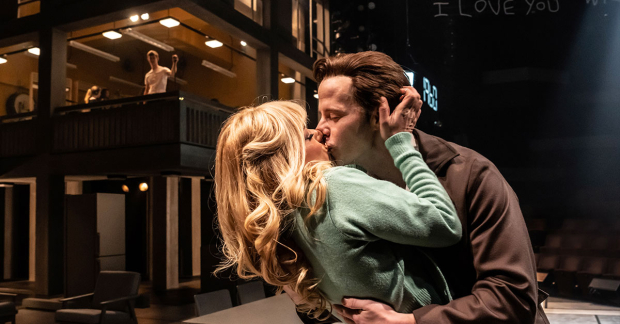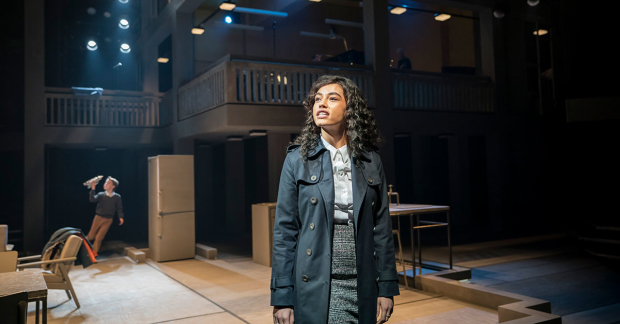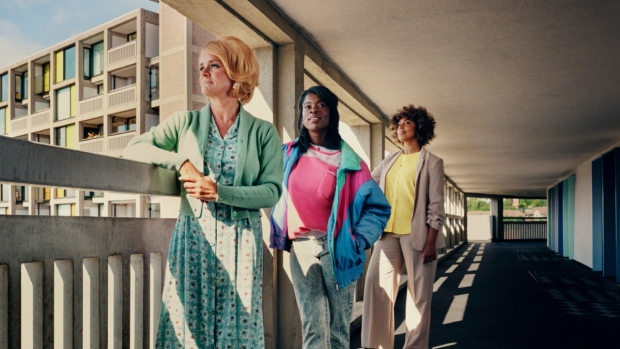”Standing at the Sky’s Edge” review – the most exciting new British musical in years

© Johan Persson
I surmised in my original review that it could prove a highly successful play that would fail to travel: Sheffield was too intensely bred into its bones. Now, this latest iteration is to transfer to the National Theatre and various programme notes emphasise that this story is not unique to Sheffield; what happened at Park Hill is a microcosm of what happened throughout the cities of Britain.
What strikes home most on a second viewing is how complicated, yet how well-coordinated the show is. Given the task of working with Richard Hawley’s songs (with a handful of new ones added), writer Chris Bush has fitted together three stories involving people who live in the same flat, each moving on in time through the four acts, with two on either side of the interval.
From 1960 to 1989, it’s Rose and Harry in occupation – back when the Park Hill flats are built as a vision of the future of Britain. Harry is an ambitious steel worker, until he runs into the Thatcher juggernaut. In 1989 Joy, a young Liberian refugee, is rehoused to the flat with her cousins Grace and George, and she stays until 2004, eventually marrying Rose and Harry’s son Jimmy. By then we’re deep in the dark days of Park Hill: until, in the final chapter, the regeneration that follows is symbolised by the 2015 arrival of the middle-class southerner Poppy. The representative who makes the sale is Connie, daughter of Joy. As is clear, all these stories are interlinked.
That’s not the only reason why the play is so successful. It’s not even when all three families sit down at the same table to eat very different meals in different times, though that particular sequence builds to a superb “Tonight the Streets are Ours” with George (Baker Musaka) leading the ensemble. It’s exactly that ensemble that knits the whole thing together, whether racing around the perimeter of the action in dizzying confusion, breaking up the place in the pre-interval mayhem of “There’s a Storm A-Comin'” or singing stock still, massed in semi-darkness for the title song. It’s worth recording that some excellent singing emerges from the shadows or from the band gallery by unidentified members of the cast.
In Faith Omole’s wonderful performance, it’s Joy who is the heart of the play. From an unhappy schoolgirl with awkward English pronunciation she grows to play out a never-ending romance with Jimmy (beautifully understated performance from Samuel Jordan) and give birth to Connie (Bobbie Little), the self-confident narrator of our tales.

© Johan Persson
Director Robert Hastie both directs traffic magnificently and gets to the heart of his characters with ease. Tom Deering’s rearrangements for an eight-piece band show Hawley’s fine songs to their best advantage. Among the innumerable people whose input was absolutely crucial, I would single out lighting designer Mark Henderson for those mysterious figures in the half-darkness of Ben Stones’ looming set.
And, of course, the real reason for this remarkable achievement of a musical is the Park Hill flats themselves: filled with such a myriad of people who have occupied them for the past 60-odd years.













